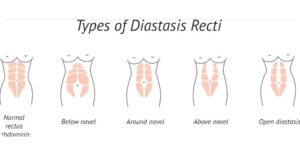From urinary incontinence to diastasis recti, there is growing evidence that physiotherapy can alleviate, and in many cases, cure these conditions.
Urinary Incontinence
Urinary incontinence is an involuntary loss of urine, occurring in roughly 6 out of 10 women. While some experience it during coughing, sneezing, laughing, and/or exercise, others report it as an “urgency,” or even, incomplete urination.
In females, the “pelvic floor” muscles support the pelvic organs, form the birth canal and also the passages for urine and faeces. These muscles need to contract effectively to hold the urine, but they must also relax enough to allow for urination, bowel movements, sexual intercourse and child birth.
Physiotherapy can reverse the symptoms of urinary incontinence. The treatment includes:
-
Pelvic floor re-training and exercises
-
Provision of pelvic floor educators/muscle stimulators to improve the activation and power of the pelvic floor contraction
-
Core stability training
-
Assessment and treatment of any low back/pelvic pain issues, which can lead to weakness of the pelvic floor muscles
Pelvic Pain
“Hypertonia” is too much muscle tone, such that the arms or legs, for example, become stiff and difficult to move.
When the pelvic floor muscles become hypertonic, they can cause pelvic pain, urinary frequency, urgency, incomplete emptying and painful urination. One may also experience pelvic pain as constipation or an unexplained pain in the lower back, pelvic region or genital area during/after intercourse.
Following an assessment, the treatment of an hypertonic pelvic would include:
- Internal manual therapy techniques to relax the pelvic floor muscles, including trigger-point release, myofascial stretches
- Myofascial release of the connective tissue of the abdomen, hips and pelvis, which support the pelvic floor
- Relaxation and breathing techniques
- Advice on toileting and positional modifications
- Provision of vaginal dilators, pelvic floor educators to assist in the release and relaxation of pelvic muscles
- Assessment and treatment of any unresolved low back, hip or pelvic pain
Physiotherapy During Pregnancy/Prenatal Physiotherapy
During pregnancy, whilst 1 in 3 women experience low back pain, 1 in 5 experience pelvic girdle pain. These symptoms often occur due to hormonal changes and the ever-increasing weight of your foetus and uterus.
A Women’s Health Physiotherapist ensures that you are doing the correct exercises in a safe manner to maintain a strong lower back and pelvic floor, throughout pregnancy (prenatal physiotherapy). Treatments include:
- Mobility exercises for the spine
- Connective tissue release of the abdomen, back, hips and pelvis
- Pelvic stability exercises
- Advice on sleeping positions, exercise and movement modification
Postnatal Physiotherapy (Physiotherapy after childbirth)
The immediate weeks after childbirth are an important time for your body to heal, as it would have undergone many changes during pregnancy. It is important to address any issues that occur in this phase, so as to prevent problems later in life.
Childbirth can lead to pelvic floor trauma, perineal tears and pudendal nerve injury (the nerve carrying sensation to your bladder and pelvic floor). Consequently, the pelvic floor can become dysfunctional and one may experience urinary or bowel urgency, incontinence, urinary frequency, incomplete emptying and/or pain during sexual intercourse.
A pelvic floor assessment is important to establish the cause of these symptoms. A Women’s Health Physiotherapist can conduct this assessment after the 6-week post-natal gynecological check up. Treatment may include:
- Pelvic floor re-training and exercises
- Provision of pelvic floor educators/muscle stimulators to improve your activation and power of your pelvic floor contraction
- Internal manual therapy techniques to relax the pelvic floor muscles, including trigger-point release, myo-fascial stretches, scar massage, neural mobilisations
- Myo-fascial release of the connective tissue of the abdomen, hips and pelvis which support the pelvic floor
- Relaxation and breathing techniques
- Provision of pelvic floor exercises and general exercise to assist in release and re-training of the pelvic muscles
- Provision of vaginal dilators, pelvic floor educators or muscle stimulators to assist in the release and relaxation of pelvic muscles
- Assessment and treatment of any unresolved low back, hip or pelvic pain
Diastasis Recti and Exercise After Pregnancy
After pregnancy, almost all women want to lose weight and get a flat tummy. However, prior to starting any exercise, it is extremely important for the new mother to be thoroughly examined for the condition called “Diastasis Recti” by a Gynecological Physiotherapist. Left unaddressed, it can lead to lower back pain, constipation and urine leaking. In some rare cases, the tissue may tear and form a hernia, too.
Diastasis recti is the partial or complete separation of the rectus abdominis muscle, or the “six-pack” muscles, which meet at the mid-line of the stomach. There are various types of Diastasis Recti (see image below).

When these muscles get overstretched during pregnancy, they often separate, making it harder for the woman to regain her flat tummy. Therefore, it is advisable for a new mother to be assessed, and if necessary, be treated for diastasis recti, before starting regular abdominal workouts. This assessment can be carried out after approximately six weeks for a vaginal (“normal”) delivery or after eight weeks for a C-section.
We have a dedicated gym attached to our clinic called “Trans-Form”, to enable your fitness journey. You would have the advantage of exercising under the guidance of a Gynecological Physiotherapist.
For more information, please contact Jaya Physio Clinics at 98496 95691.

